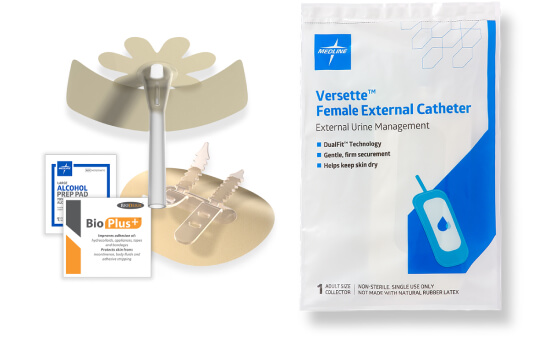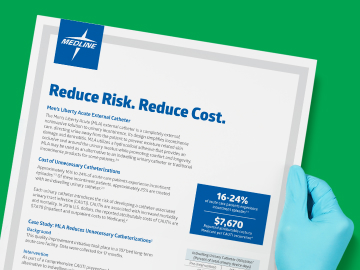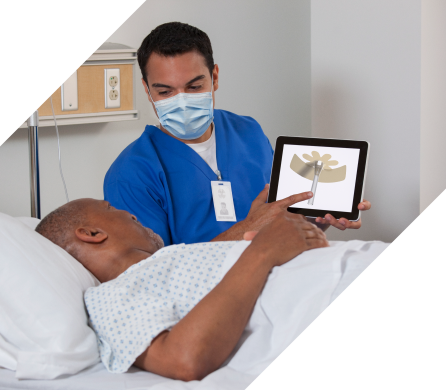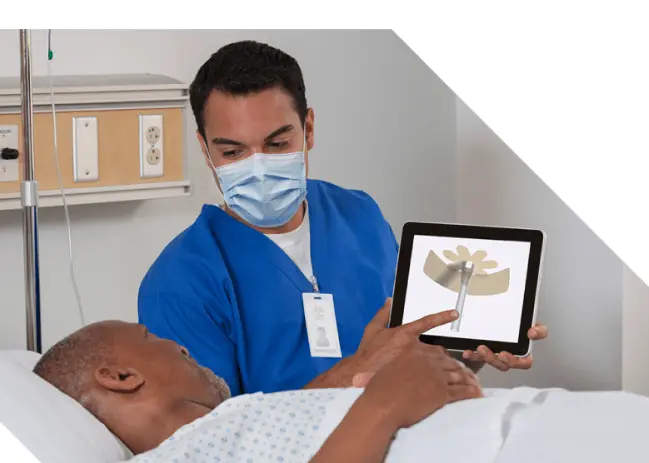Reduce unnecessary Foley use
Our advanced Men’s Liberty Acute Male External Catheters and Versette Female External Catheters are great alternatives when IUCs aren’t indicated. They help reduce Foley use and increase patient safety. Designed for a better fit to reduce leakage, our external catheters save clinicians time, protect skin and help preserve patient dignity.
30% to 50% of prolonged catheterization days are unnecessary—the top CAUTI risk factor1
Offer a secure, comfortable fit with our male external catheter
The Men’s Liberty Acute male external catheter is the only completely non-invasive Foley alternative for men. Its innovative, leak-proof design is suction-free for complete freedom of movement.
- Strong, gentle adhesion ensures a secure fit—without shaving
- One-size-fits-most
- Lasts 24-48 hours
Provide a better fit and stop leakage with our female external catheter
Versette female external catheter uses low-pressure suction to pull urine into a bedside canister. Soft mesh underwear secures the pad for a comfortable fit, and Versette’s thin profile reduces the risk of pressure injury.
- Comfortably fits most patients
- Lasts 8-12 hours
- Latex-free
- Viable option for males with retracted anatomy
Experience our external catheters for yourself: Request samples
Simply complete this form and a specialist will contact you soon to coordinate your no-cost samples.

Discover more ways external catheters help improve safety

Learn how Men’s Liberty Acute improves care
A recent study showed Men’s Liberty Acute reduced IUC insertions 19.2% with no detected cases of infection.2

Explore strategies for reducing IUC use
How do male and female catheters, bladder scanners and intermittent trays help reduce IUC use and increase safety?

Overcome barriers to using Foley alternatives
Learn a 4-part approach that includes best practices—from education and training to nurse-driven protocols.
References:
- Meddings, J. (n.d.) Appropriate use and prompt removal of indwelling urinary catheters. CDC, HRET and STRIVE. CAUTI 102 (cdc.gov)
- Based on a 17-month study at a 107-bed long-term acute care facility. Data on file.


